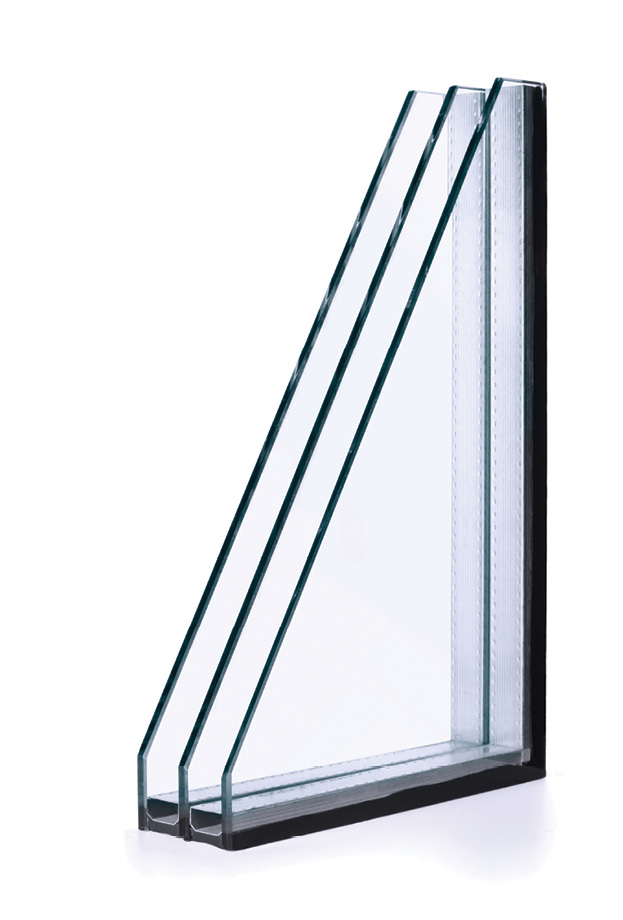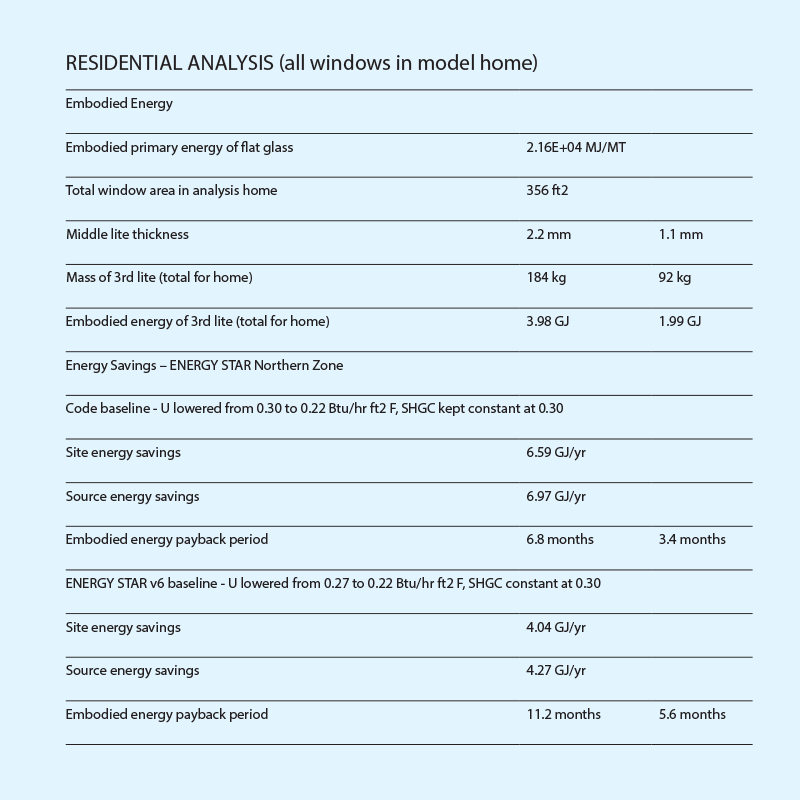Triple Glazing and Embodied Energy
Yes, the juice is worth the squeeze

As both national and local groups look for solutions to address climate change, decarbonize the buildings segment, and greatly increase energy efficiency, it is clear that high-performance fenestration has an important role to play. Is this the momentum that is needed to finally make triple glazing go mainstream in colder climates?
There are a number of considerations with moving to triple glazing, including cost, manufacturing changes, frame modifications, weight and more. Significant efforts are underway to ease the transition, whether that is using traditional triple glazing or the newer concept of “thin triples,” which use a thin glass middle lite. The numerous support initiatives include technical support from Lawrence Berkeley National Laboratory, ongoing field demonstrations across the country by Pacific Northwest National Laboratory, market assessments by Steve Selkowitz and the Northwest Energy Efficiency Alliance, and the new Partnership for Advanced Window Solutions.
The embodied energy question
In this article, I will just address one question that has been raised about embodied energy. Specifically, is the energy savings gained by moving from double to triple glazing outweighed by the extra energy used to make the third pane in the first place?
This is a fairly straightforward question to answer, at least in a simplified manner. First, the embodied primary energy associated with manufacturing the added third lite is easily calculated from the National Glass Association industry-wide environmental product declaration for flat glass, ASTM-EPD121. This will vary based on the thickness of glass, as shown on the chart on p. 18. Next, this is compared against the corresponding energy savings in a representative building from moving from double glazing to triple glazing, which will vary based on building type and location. The result can be easily understood in terms of the payback time—how long until the extra energy to make the third lite is “paid back” by the energy savings.
Measuring energy impacts
As part of the proposed update to the Energy Star program for Windows, Doors, and Skylights, LBNL has done an extensive analysis of the population-weighted energy savings in residential homes in the northern zone for different U-factors and SHGC levels. The energy savings is calculated for the proposed 0.22 U-factor compared to two different baselines: a code baseline with U-0.30, and the Energy Star version 6 baseline with U-0.27.
For an apples-to-apples comparison to the primary embodied energy, the site energy savings at the home from both baselines are converted to source energy savings reflecting the actual primary energy use including power generation, transmission and delivery losses. The results are shown in the table above for the total home in units of gigajoules (GJ). As a point of reference, the embodied energy to make a typical smartphone, which gets replaced every two years and doesn’t save any energy, is about 1 GJ.
The results

As shown in the above table, the embodied energy of the added third lite is paid back in just seven to 11 months for 2.2-mm glass in traditional residential triple glazing and only three to six months for 1.1-mm glass used in thin triples. This is quite minimal in consideration of the ongoing energy savings that will accumulate over the next 20 to 30 years.
This analysis is somewhat simplified, just answering the general question about adding the extra pane of glass. It does not include embodied energy associated with changes in the spacer edge assembly or the frame, and the specific energy savings and carbon impact for any specific building will vary based on building characteristics, location, local utility source and fuel types.
Nonetheless, the answer is clear: the embodied energy from the third lite is small compared to the energy savings, paid back quickly and the cumulative energy savings from triple glazing in northern climates will be significant over the life of the window, as well as deliver better comfort to occupants and resilience in the face of more extreme weather events.
Resources
- “Thin Triple Pane Windows: A Market Transformation Strategy for Affordable R5 Windows,” by Stephen Selkowitz, available in the Northwest Energy Efficiency Alliance, Report #E20-310, April 2020.
- Flat Glass Environmental Product Declaration, National Glass Association, ASTM-EPD121, December 2019 (pdf).
- ENERGY STAR® Windows, Doors, and Skylights Version 7.0 Criteria Analysis Report, July 2021 (pdf).
- PNNL prototype buildings
